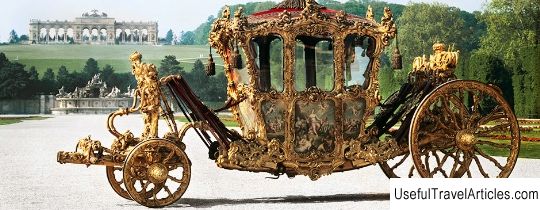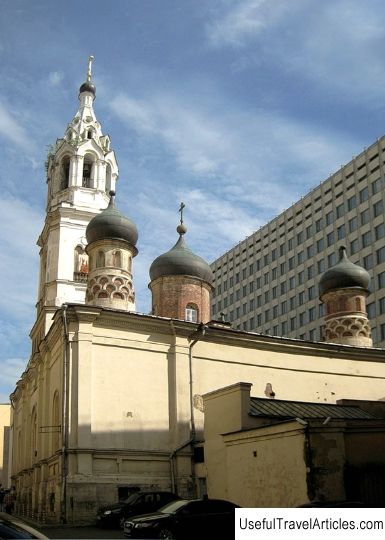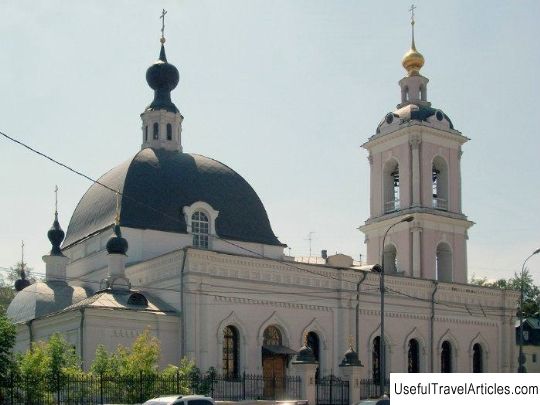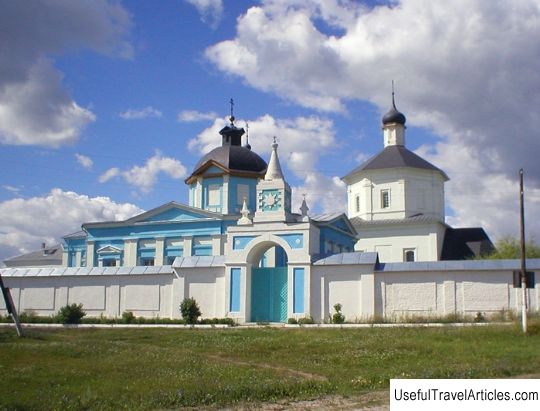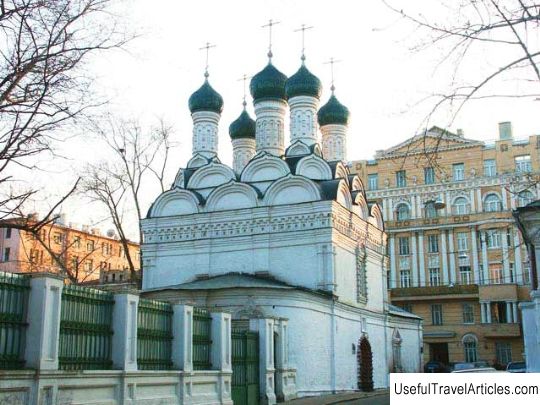Kolomenskoe description and photo - Russia - Moscow: Moscow
Rating: 8,5/10 (1489 votes) 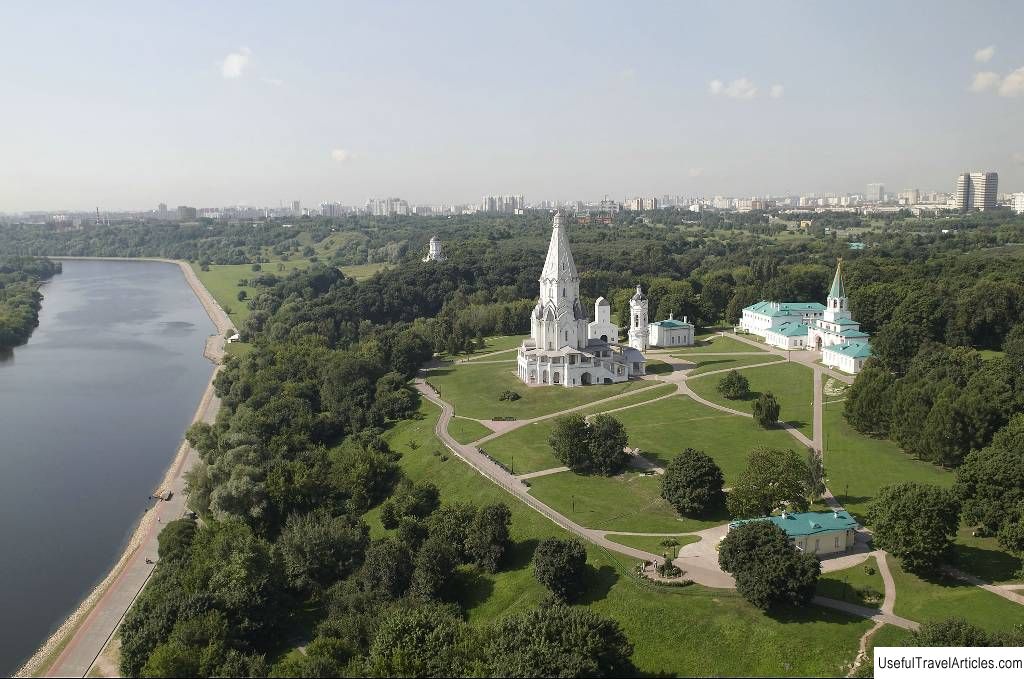
Kolomenskoe description and photo - Russia - Moscow: Moscow. Detailed information about the attraction. Description, photographs and a map showing the nearest significant objects. The name in English is Kolomenskoe. Photo and descriptionThe village of Kolomenskoye was once the hereditary land ownership of the royal family. Today the former patrimony of the great Moscow princes is part of the state united art historical-architectural and natural-landscape museum-reserve. Kolomenskoye is located in the southern administrative district of Moscow. History of the estateLegend has it that the village was founded by the residents of Kolomna, who were looking for shelter from the Mongol-Tatar hordes and fled from their homes in search of salvation from the khan Batu. For the first time about Kolomenskoye mentions the will of Ivan Kalita , drawn up in 1336. In the first third of the XVI century. Vasily III builds on the lands of his estate a church dedicated to the birth of the heir, and then his son, John the Terrible , getting married, builds another church in the village. The Tsar loved Kolomenskoye with particular trepidation: the name-days of Ivan the Terrible were celebrated annually in the estate. Who started the uprising against Vasily Shuisky Ivan Bolotnikov chose Kolomenskoye as his place of headquarters. In October 1606, his army built a prison in the village, from where Voivode Bolotnikov conducted an agitation campaign and called for False Dimitry to be recognized as the legitimate sovereign. Alexei Mikhailovich , who came to the kingdom in 1645, also fell in love Kolomenskoye. Under him, the village flourished and became rich, because the sovereign preferred to spend most of his free time in his estate near Moscow. Under Alexei Mikhailovich, many objects were built in Kolomenskoye - the royal palace made of wood, numbering 270 rooms, halls and premises, Kazan house church, Prikaznye and Colonel's chambers, Sytny and Khlebny courtyards and guardhouses. Gardens were laid out around the buildings, and the territory of the estate was surrounded by a fence with three entrance gates. The death of Alexei Mikhailovich brought oblivion and desolation to Kolomensky. Later, Catherine II ordered to dismantle the dilapidated residence, and in the 70s. XVIII century. Prince Makulov designed and built a new palace in Kolomenskoye. The work was partially used materials left after the analysis of the old tsarist choir. Catherine II stayed in Kolomenskoye, arriving in Moscow from St. Petersburg. Later, her palace was rebuilt under Nicholas I, and in 1872 the wooden structures were finally liquidated. In 1994, the Kolomenskoye estate was included in the UNESCO World Heritage List. Museum of Wooden Architecture After the revolution, Kolomenskoye was turned into open air museum . The idea belonged to the restorer Pyotr Baranovsky, who caught fire by creating an exhibition similar to the museum of wooden architecture (skansen) in Norway. In the late 1920s. last century in Kolomenskoye began to deliver monuments of Russian wooden architecture from different parts of the European honor of the country. After the war, the geography of the buildings brought to Kolomenskoye expanded significantly, and exhibits from Siberia appeared on the territory of the museum. In the museum you can see the Bratsk Ostrog Tower , built in 1659 on the Angara River by Russian explorers. A wooden prison tower called Mokhovaya was brought from Sumskiy Posad. Nikolo-Korelsky Monastery near Arkhangelsk was founded in the XIV century. and for a long time served as the country's sea gate. Passage tower of the monastery is also presented in the Museum of Wooden Architecture in Kolomenskoye. The famous exhibit of the Kolomna skansen - House of Peter I , built for the emperor in the Novodvinsk fortress in 1702. In Moscow, this is the only museum whose exposition tells about the life of Peter I. Attention of visitors to the estate Also worthy are the wooden church of St. George the Victorious , built in 1685 in the Arkhangelsk region and a former part of the churchyard in the village of Semenovskaya, and the Dutch house of Peter I, which is a full-size model of the oldest wooden house in the Dutch Zaandam. The former village of Kolomenskoye is spread over an area of more than 390 hectares. On the territory of the former royal patrimony there are many architectural objects that occupy a worthy place in the lists of the most valuable monuments of history and culture. Church of the Ascension of the Lord The oldest building in Kolomenskoye is the Church of the Ascension of the Lord . The Orthodox church was built by order of Vasily III. The Grand Duke of Moscow entrusted the project to the Italian Peter Francis Anibala. The Church of the Ascension of the Lord in Kolomenskoye is the first tent-roofed church built in Russia from stone. The foundation was completed in 1528, and the church was consecrated only four years later. The original decoration of the temple is known only from written sources. None of the decorative elements have survived to this day. In the 70s. XVI century renovations began in the temple, as a result of which they lost the floor of ceramic tiles and renewed the "wall letter" on the eastern facade near the royal place. In 1884, the wall paintings were completely replaced by oil painting. The height of the church bell tower is 62 m, the internal space covers an area of about 100 square meters. m. Three high porches lead to the gallery surrounding the church. When decorating the church, the architects used Gothic elements drawn in the Renaissance style. The building is considered the only and unique work of Russian architects of this kind. Church of the Beheading of John the Baptist< img src="/preload.png" data-src="/uploads/posts/2019-08/travel-image-71.jpg"> The Kazan Church in Kolomenskoye was founded in 1649 by decree of Tsar Alexei Mikhailovich in honor of the birth of the heir to the throne . Its construction took only four years, and in 1653 the temple with a hipped roof bell tower was consecrated in honor of the Kazan Icon of the Mother of God. At the beginning, the church was a house and the wooden palace of the king was connected to the temple by a covered 50-meter passage. The building is made in the style called "pattern". The building of the church is pillarless, erected on a high basement and topped with five chapters. The church houses the Miraculous Icon of the Mother of God "Reigning". It was found in 1917 in the basement of the Ascension Church in Kolomenskoye. The image is considered the main shrine of the political movement, supporting the monarchy as the only correct state structure in Russia. Vodovzvodnaya Tower In the 70s. XVII century in Kolomenskoye, a tower was built, in which it was supposed to place a mechanism for lifting water. The Vodovzvodnaya Tower became the center of the hydrotechnical mechanism that supplied the Tsar's court. The mechanism was made by Bogdan Puchin, a former famous craftsman at the Kremlin Armory. The tower was erected between Kolomenskoye and Dyakov, a village that entered later to the estate complex. The height of the building is 15 m and its vertical proportions are very harmoniously combined with the architectural ensemble formed by the bell tower of the Church of St. George the Victorious. The tower is built of bricks, its stone vault is covered with wood, and both main facades are elegantly decorated. Today the Vodovzvodnaya Tower houses a small museum exposition dedicated to the history of water supply in the 17th-20th centuries. Tsar's Palace The Tsar's Palace in Kolomenskoye was built for Tsar Alexei Mikhailovich in the second half of the 17th century by famous Russian architects Semyon Petrov and Ivan Mikhailov. The palace was designed in the form of a system of independent rooms connected by galleries and walkways and called stands. It had an asymmetrical layout and consisted of 26 chambers decorated with carvings, scaly roofs and painted with gold leaf. The inside of the walls was painted by Simon Ushakov, who used primed canvases as a basis for his work. The tower was sheathed on the outside with boards, and the frames of three thousand windows on the facades were richly decorated with high-relief carvings. The total area of the Tsar's Palace in Kolomenskoye was 10,250 sq. m. excluding buildings for servants and utility warehouses. In 1768, Catherine ordered to demolish the palace, the repair costs of which were too high. The layout created before this was stored in the Armory, but over time it was lost. They decided to recreate the palace in the 90s. last century. The authors of the reconstruction project relied in their work on the surviving measurements and plans. The place was chosen aside from the previous one, because trees grew on the ruins of the old residence of Alexei Mikhailovich, which it was decided to preserve. As a result, the historical interiors were recreated in 23 rooms and halls, and the total area of the constructed palace is more than 7000 sq. m. In the palace, you can see the tsarina's mansions with the Front porch , decorated with ornaments, subject paintings and furniture. The prayer room contains lists of famous icons, and the ceiling of the chapel is decorated with medallions. In the decoration of the tsar's choir, state symbols were used - heraldic animals, a two-headed eagle, and the enfilade of ceremonial rooms is decorated with stone, wood and oil painting. In the mansions of the princes, genuine exhibits of the 17th century are exhibited. - books and teaching materials for teaching grammar. Fairgrounds in the village of Kolomenskoye are used for the largest honey fair in Russia.         We also recommend reading Monument to the sunken ships description and photos - Crimea: Sevastopol Topic: Kolomenskoe description and photo - Russia - Moscow: Moscow. |


